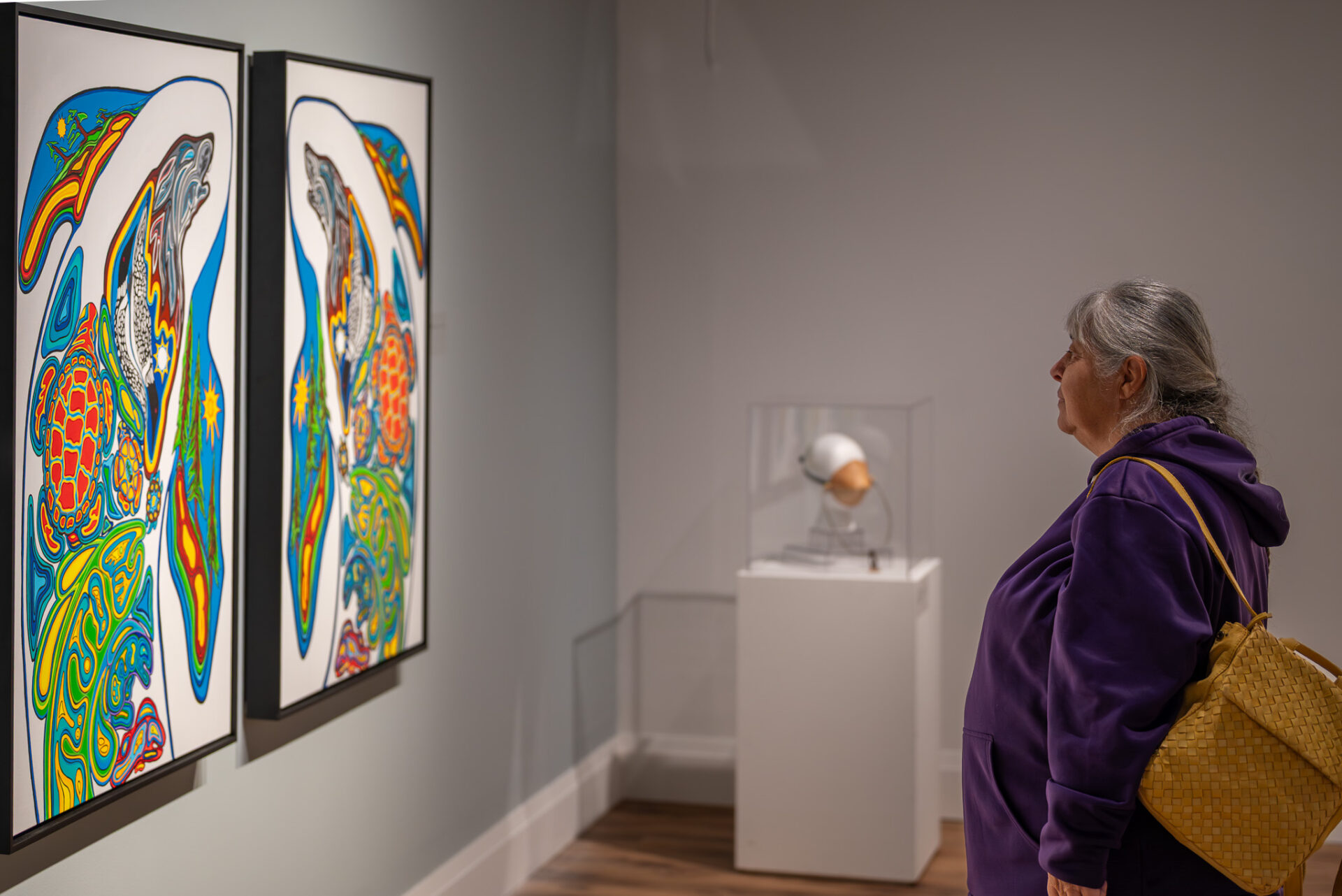Woodland Cultural Centre celebrated various forms of art, film, and storytelling during its Artfest event on Saturday, November 15, 2025.
Held in collaboration with One Mic Educators and We Liberate the World, the event kicked off with a “Building Immigrant Indigenous Friendship” community talk with Sylvia Bero of the Wolf Clan (Mohawk), Linda Burning of the Beaver Clan (Tuscarora) and SPIN El Poeta, a Guatemalan poet.
Following the discussion, several spoken-word artists were invited on stage for a LA Raza Open Mic session.
LA Raza, run by One Mic Educators and founded by SPIN El Poeta, is a spoken-word series that brings together Indigenous, African Diaspora and Latin American artists and amplifies their voices.
The open mic featured pieces from SPIN El Poeta, Jadyn Scott, Hani Morrar and Krystal River.
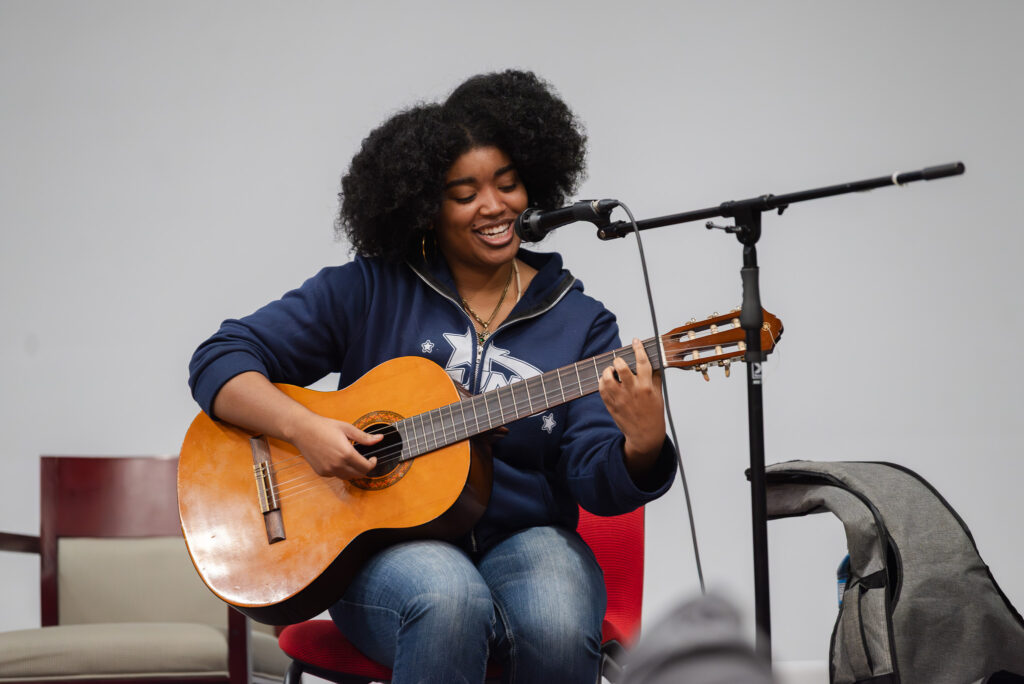
Each of the artists touched on first-hand experiences, their identities, and their reflections on politics and war.
Audience members could be heard reacting to the poems, moved by the artists’ passion, their words and the messages behind them, and many also took the opportunity to later speak with the various artists.
After a short break, filmmaker Kahstoserakwathe Paulette Moore, co-founder of The Aunties Dandelion media arts organization, introduced three short films.

The first screening was of “Ohén:ton Karihwatéhkwen” (The Opening Address) which was directed by Konwanahktotha Alvera Sargent and Jess Lowe Chaverri of Akwesasne Freedom School. The ten-minute film featured 21 people speaking each part of the Thanksgiving Address in the Mohawk language.
“The Words That Come Before All Others, that’s our primary ceremony that is giving thanks to the natural world – not for the natural world through another being,” said Moore. “That’s a really important distinction, that we’re giving thanks directly to the natural world and making family with the natural world.”
The second screening was “Ionkwahronkha’onhátie’ – We Are Becoming Fluent,” a five-minute documentary from The Aunties Dandelion. The short follows the Ionkwahronkha’onhatie’ language group as they arrive in Washington, D.C., for the 2025 Smithsonian Folklife Festival to explore a multicultural and multilingual space of collaboration, revitalization and empowerment.
The third and final screening of the day was “VESS,” another Aunties Dandelion production. Written and directed by Moore, the 22-minute film follows a Six Nations carpenter and philosopher (played by Glen Gould) whose grief starts to transform as he builds a home for a young family returning to their territory.
“A lot of this story is my own family’s story of tragedy, but also my own coming back to Six Nations over a decade ago,” said Moore. “It’s about what I found here, who took care of me when I came and who included me in ceremony. I invite you to think about why and how we make family with each other; what does that have to do with healing and how do we actually do that?”

As the screenings wrapped up, audience members took the opportunity to extend their thoughts and feelings about the films and what each one meant to them.
Noting that “VESS” was entirely filmed on Six Nations of the Grand River Territory, Heather George, Woodland’s Executive Director, later said it was powerful to see the local community reflected on film.
“Part of Woodland’s work is all about seeing ourselves–seeing the joy, the humour, the language, and all the things that the residential schools meant to take away,” she said. “Getting to hear the language, see familiar faces, friends and places, and having it up on the big screen in our theatre was so powerful to me.”
Towards the end of the event, the cultural centre officially opened one of its newest exhibits.

The solo exhibition, titled “Familial Waters,” boasts around 30 works by painter Dianne Brown-Green.
The bold, colourful artwork is done in the Woodland style and reveals the artist and her family’s connection to water and nature, drawing on her memories of time in Algonquin Park and Manitoulin Island.
“Much of my work is a reflection of my experiences in nature and culture. It is a reminder of how important our environment and families are, how they must be respected and protected to ensure their survival,” said Brown-Green. “I am grateful to my parents, to my father–a wonderful man that I was privileged to know–who was taken from his name, family and culture, for having the courage and strength to introduce me at a very young age to the natural world, to the importance of family and to our Indigenous roots, those memories will live within me forever.”
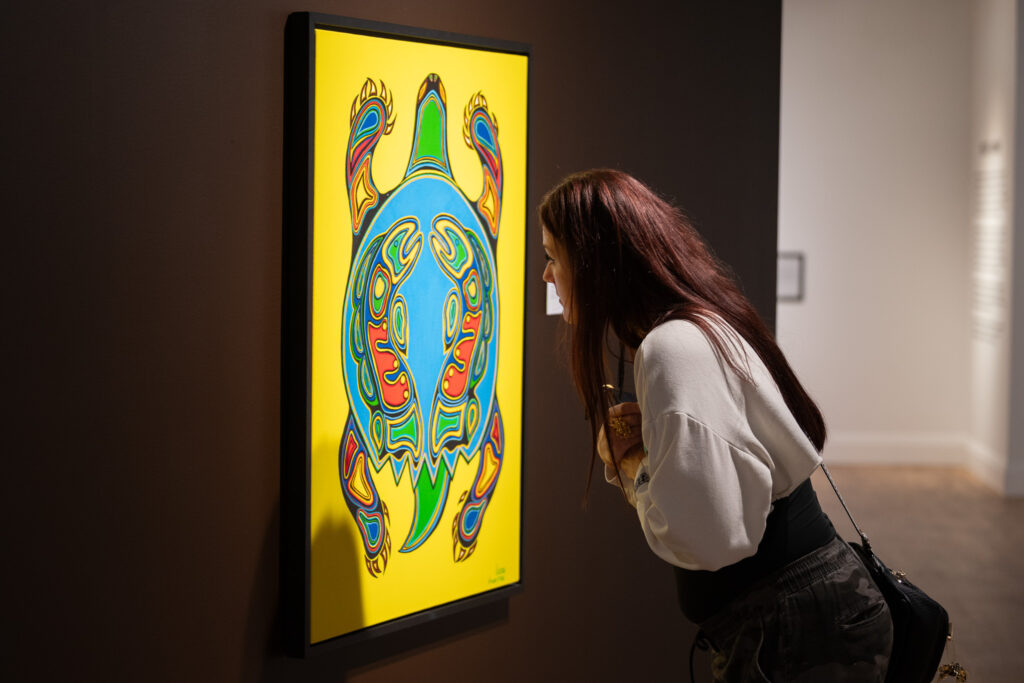
George later said she was happy to finally have Brown-Green’s exhibit on display, explaining that the centre’s former curator, the late Patricia Deadman, had been working to bring it to fruition before she died in November 2024.
“Dianne uses these really beautiful, vibrant colours in her work, so it’s really fun to have it in the gallery space, and it’s just wonderful to have such a lively exhibition that recognizes the role of nature and animals, and our relationship to them,” said George. “We’ve been waiting to have the show for a while now, it was one that Patricia Deadman had been working on, so we’re really glad that we’re able to finally have it here.”
George also added that she was grateful for all the staff and volunteers who helped put the programming together over the weekend, noting that the centre had also hosted an event called Path of Resilience on Friday, November 14.
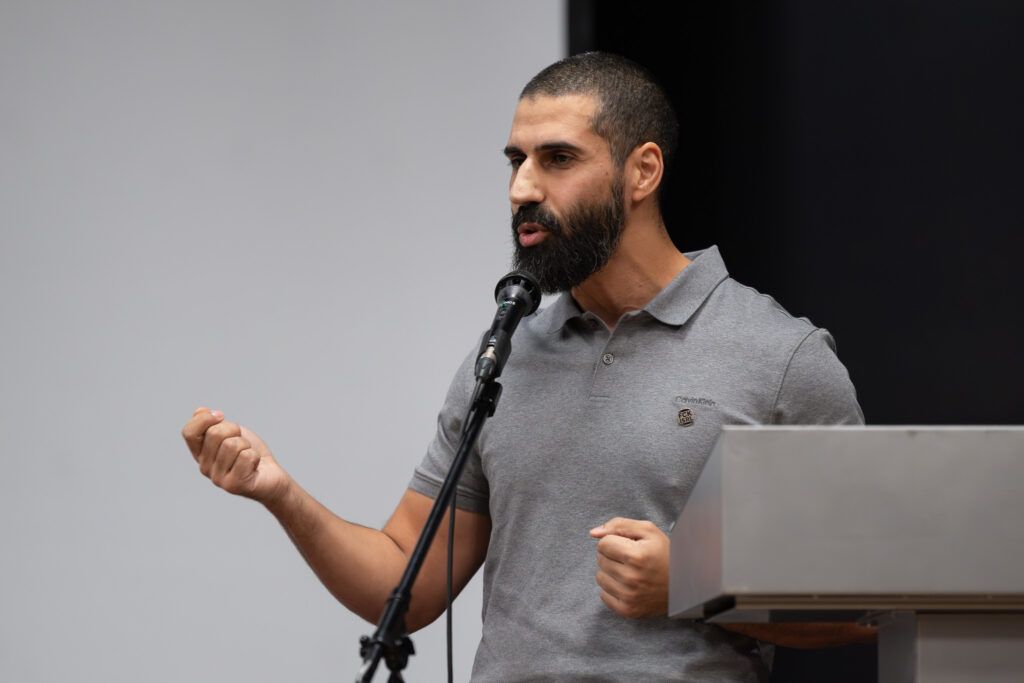
The evening’s programming marked the return of R.G. Miller’s “Tsi Non:we Entewaha’hara’ne / Our Path Forward” installation, which has been set up in the newly restored former Mohawk Institute Residential School.
“It’s a series of works that he created reflecting his 11 years at the residential school and what he experienced. Gary came to the Mohawk Institute when he was just three years old. Because he was so young, they put him with the junior girls, and the first space that he really has memories of is the junior girls’ dormitory, so that’s the space his exhibition is up in right now,” she said. “It’s been a really busy and very powerful two days here at Woodland, and we’ve been supported by so many great volunteers who have made the work so much easier. They’re always so positive and helpful, and it’s just made such a big difference.”
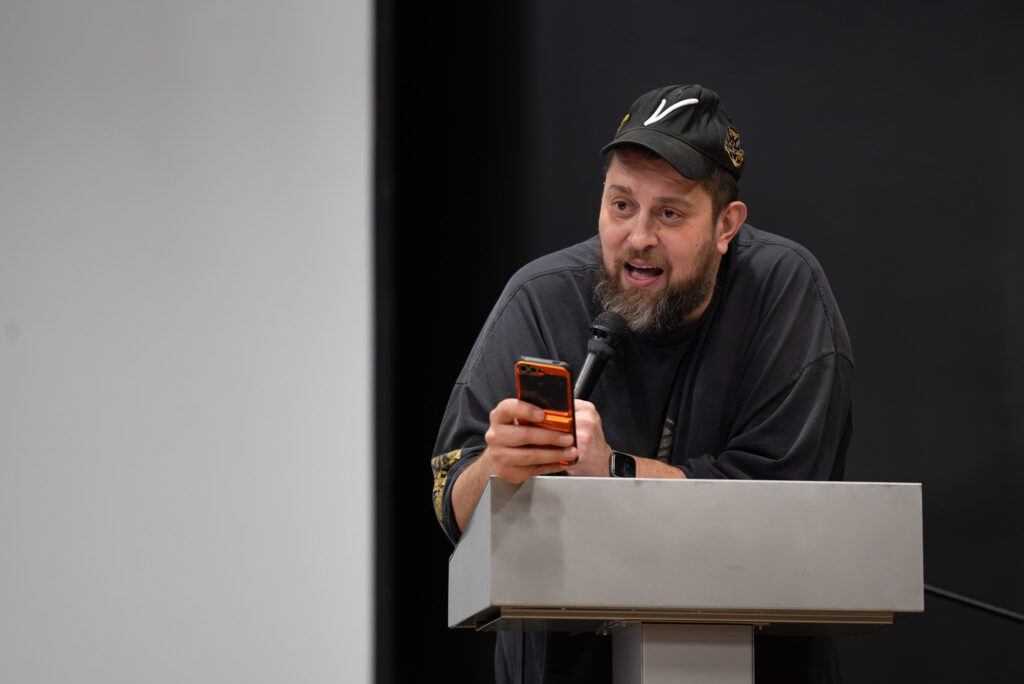
Kimberly De Jong’s reporting is funded by the Canadian government through its Local Journalism Initiative.The funding allows her to report rural and agricultural stories from Blandford-Blenheim and Brant County. Reach her at kimberly.dejong@brantbeacon.ca.
